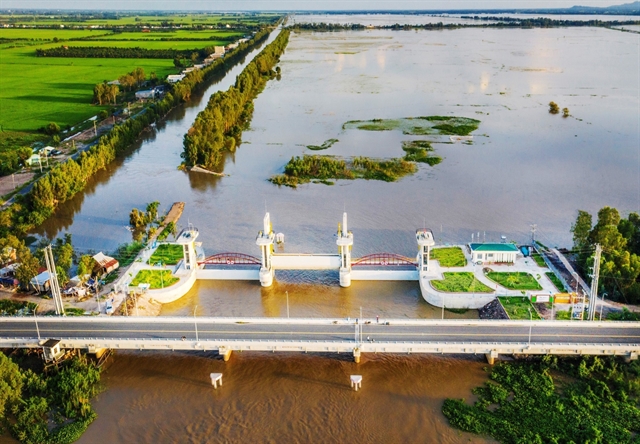 Society
Society

Pepper farmers in Kiên Giang Province’s Phú Quốc District are developing their pepper orchards in combination with tourism services to maintain cultivation areas and improve income as the price has declined in recent years.

|
| Pepper grown in Kiên Giang Province’s Phú Quốc District. – VNA/VNS Photo Lê Sen |
KIÊN GIANG – Pepper farmers in Kiên Giang Province’s Phú Quốc District are developing their pepper orchards in combination with tourism services to maintain cultivation areas and improve income as the price has declined in recent years.
The island district is a famous tourist destination and has many speciality products such as fish sauce and pepper. The district’s pepper is well-known for its hot and tangy flavour and is sought by most tourists who visit the district.
The district has 390ha of pepper with an annual output of 675 tonnes, mostly in Cửa Dương and Cửa Cạn communes, according to the district’s Economic Bureau.
About 80 per cent of the district’s pepper products are sold to tourists at pepper orchards, tourism destinations and the night market in the district. The prices of pepper products sold at orchards, tourist destinations and the night market are higher than the prices that traders buy from farmers.
The district had nearly 300ha of pepper in 2010 and the pepper growing area increased to 500ha in 2015 because of the high price.
However, farmers have reduced their cultivation areas because of the declining price of pepper and unstable outlets since 2017.
Lê Thanh Huy, chairman of the Cửa Dương Commune Farmers Association in Phú Quốc, said the commune pepper growing area fell from more than 200ha in its peak time to 132ha now.
The commune has nearly 200 households growing pepper.
To improve income for pepper farmers, local authorities have encouraged them to expand pepper in combination with tourism services, he said.
The commune, which has the largest pepper growing area in Phú Quốc, now has 15 households implementing the model of growing pepper in combination with offering tourism services.
Đặng Thế Hải, who is implementing the model in Cửa Dương’s Cây Thông Trong Hamlet, said the model has helped him increase the sale of pepper products.
“When tourists visit the pepper orchard, they like to buy pepper products for their consumption and gifts for other people,” he said.
Hải has also intercropped durian trees in his pepper orchard to increase income.
Pepper farmers in the district have invested in tourism services and advanced farming techniques to attract tourists to their orchards.
Trần Quốc Dương in Cửa Cạn Commune has borrowed soft loans to invest in tourism services and advanced farming techniques in his 2ha pepper orchard to increase income.
Besides offering tourism services in the orchard, he sells pepper and pepper-related products to visitors. With the income from offering tourism services, he is now able to maintain cultivation of pepper.
The district authorities have instructed pepper farmers to apply advanced techniques and good agricultural practices (GAP) standards to improve yield and quality.
More than 70 per cent of pepper growing households in the district are using drip irrigation for their pepper orchards.
The district has also developed methods of using Java olive trees as trellises instead of concrete or wooden pillars to grow pepper plants, saving costs for farmers.
Farmers have received instruction in techniques to produce pepper seedlings from seeds and cuttings.
The district’s raw pepper products are red pepper (pepper harvested when they are ripen), black pepper (pepper harvested when they are green) and white pepper (skin – peeled pepper).
Many pepper growing households in the district have produced pepper-related products such as pepper salt, pepper sauce, and pepper braised with sugar and fish sauce.
Trần Thị Hồng, deputy head of the bureau, said the cultivation of pepper in the district has fluctuated but pepper farmers have maintained their growing areas.
The district has cultivated pepper for 100 years and is one of the district’s traditional occupations.
Up to 80 – 90 per cent of pepper varieties planted in the district are local varieties which are highly resistant to disease.
Under the district People’s Committee’ agricultural development plan in 2020 – 30, the district will develop its pepper growing area to 400ha with an annual output of 1,000 tonnes.
The district will register with the National Office of Intellectual Property to receive geographical indication certification for its pepper.– VNS




